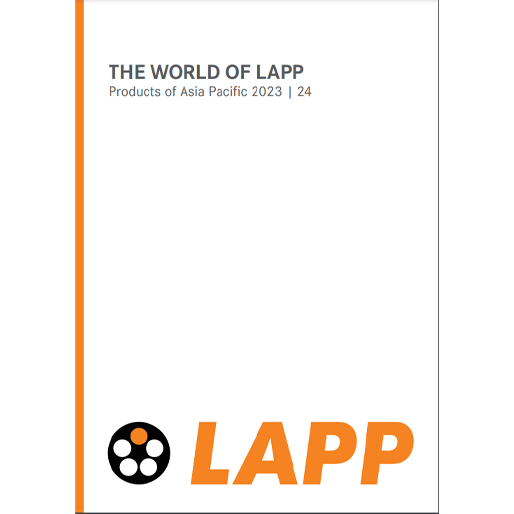Waterproof cables and connection systems
What is a water-resistant, what is a waterproof connection system?
At first, the answer seems simple: a cable that retains its full functionality even under water for a long time. However, such extreme applications are rare. Very often, cables are actually laid in a dry spot, but sometimes get wet, for example because a coolant leaks into a machine or because plants in the food industry have to be regularly injected with hot steam. Water-resistant cables are therefore required wherever cables can become damp. Water-resistant means that the plastic on the sheath does not dissolve over time. Some plastics naturally have this property, but not all of them do. When water cannot penetrate the plastic and get to the cores, this is known as a laterally waterproof cable. Cables that are particularly resistant to water for outdoor installation are also longitudinally watertight. If water penetrates at the connector on the end of the cable, it cannot spread along the cores, as a jelly-like filling made of water-repellent petroleum jelly prevents this
A water-resistant cable alone isn’t adequate, however. The critical point of a cable is where it is interrupted: at the connector. Under no circumstances must water penetrate between the plug and socket and wet the contacts, otherwise it could result in a dangerous short circuit. The transition, where the cable runs into the connector, must also be impermeable. In businesses in the food industry, where control cabinets are also cleaned with chemicals and steam, the openings in the control cabinets must also be sealed with cable glands
The IP protection class has been established to assess how dense an object is. “IP” stands for “International Protection”. The protection class is indicated by two numbers. The first number indicates whether foreign bodies can penetrate. “6” means “dust-tight” and is the highest protection class for foreign bodies. The second digit indicates how waterproof a housing is. Here, the protection classes range from “1” (protection against drops of water) to “8” (protection against permanent submersion) and even “9” (protection against water when cleaning with high pressure/steam jets). The highest protection class is IP69K, whereby “K” requires special protection in vehicles.
Where are water-resistant connection systems used?
Water-resistant connection solutions are required where cables can get moist. This is the case in industry, where the cables and connectors come into contact with cooling lubricants, particularly in food production, where plants have to be regularly cleaned and disinfected with steam and jets of water. Waterproof connections should be standard outdoors, such as in photovoltaic systems, antennae, systems in the chemical and construction industry and numerous other applications. Even if cables are covered by a roof, waterproof components should be used as it can always rain and condensing air humidity can accumulate and penetrate into leaky gaps. Conditions are particularly harsh on the high seas. Waterproof connection solutions are mandatory on ships, oil rigs or port systems. Due to the high corrosion in salt water, these are preferably in versions of protection class IP69K, which often requires a metal design for connectors, such as stainless steel or other corrosion-resistant materials such as die-cast zinc
Which water-resistant or waterproof components are available from LAPP?
As the global market leader for integrated connection solutions, we offer a wide portfolio of water-resistant and waterproof cables. The ÖLFLEX® HEAT 125 MC is suitable for a wide temperature range from -55°C to +125°C. It has approval from Germanischer Lloyd for use in shipping and can withstand both fresh and salt water. Some EPIC® rectangular connector housings, such as the EPIC® ULTRA H-B 6, are waterproof. They have been tested with the salt spray test in accordance with IEC 68-2-52 severity level 2. A whole range of cable glands are also waterproof, such as the pressure-tight SKINDICHT® SHV-M. It meets the protection class IP68 to 10 bar, which corresponds to a water depth of 100 metres. The HITRONIC® HUW1500 data cable, which is available in various versions, is extremely robust. It is watertight both laterally and longitudinally and, thanks to its rodent protection, is suitable for installation in the ground.
ÖLFLEX® SOLAR XLWP is an electron beam cross-linked solar cable that complies with the strictest requirements in terms of operating conditions and standards (in accordance with EN 50618). Thanks to its optimised, unique LAPP cable design, the ÖLFLEX® SOLAR XLWP has a high level AD8 of lateral watertightness even after a prolonged period of time in water.





